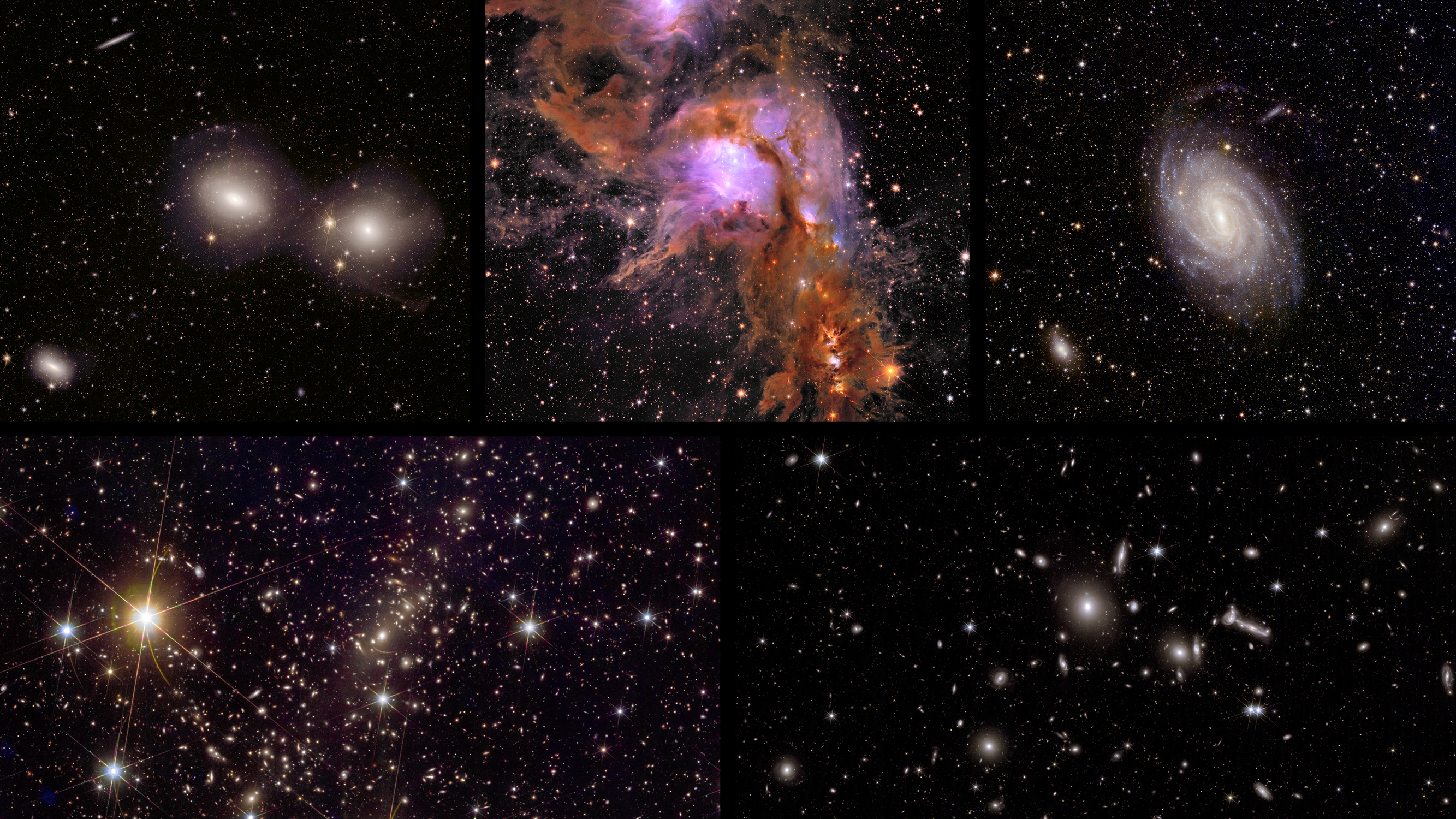Just released: Five unprecedented new views of Universe captured by Euclid

The European Space Agency's (ESA) Euclid space telescope, which is on a mission to unveil the mysteries of the dark universe, has beamed back its first scientific data along with a treasure trove of breathtaking images. Launched less than a year ago, the mission has already surpassed expectations, capturing never-before-seen details of galaxies and celestial phenomena during its early observation phase.
These observations, targeting 17 astronomical objects ranging from nearby gas clouds to distant galaxy clusters, pave the way for Euclid's main mission - to unlock the secrets of dark matter and dark energy, the enigmatic components that make up most of the universe's mass and energy, and understand how the universe evolved into its current state.
According to current cosmological understanding, the ordinary or visible matter of the universe - which includes everything we can see and detect, such as stars, planets, dust clouds, and living organisms - accounts for only 5% of the cosmos. The remaining 95% is shrouded in mystery, divided between dark matter (25%) and dark energy (70%). Dark matter is invisible but it exerts a powerful gravitational pull, influencing the motions of galaxies and the large-scale structure of the cosmos. Dark energy, on the other hand, is a mysterious form of energy that permeates all of space and seems to be accelerating the expansion of the universe at an ever-increasing rate.
Understanding these enigmatic components is crucial for building a complete and accurate picture of the universe - its composition, evolution, and ultimate fate. Euclid represents a significant leap forward in our quest to understand this invisible matter. Unlike ground-based telescopes hindered by Earth's atmosphere, the dark universe detective boasts the ability to see deeper and sharper, capturing faint celestial objects and vast stretches of the sky in both visible and infrared light.
"Euclid is a unique, ground-breaking mission, and these are the first datasets to be made public – it’s an important milestone. The images and associated science findings are impressively diverse in terms of the objects and distances observed. They include a variety of science applications and yet represent a mere 24 hours of observations. They give just a hint of what Euclid can do. We are looking forward to six more years of data to come," says Valeria Pettorino, ESA's Euclid Project Scientist.
Here are the five stunning cosmic objects captured by Euclid (see the banner image):
- Messier 78: Located about 1300 light-years away in the constellation of Orion, Messier 78 is a vibrant nebula known for its active star formation, revealing the birthplaces of countless stars.
- NGC 6744: A barred spiral galaxy brimming with star formation, resembling our own Milky Way in many ways.
- Abell 2764: A colossal galaxy cluster, home to thousands of galaxies and scorching hot gas, held together by the invisible grip of dark matter. Abell 2390 lies 2.7 billion light-years away in the constellation of Pegasus and is a large repository of dark matter, making it an ideal astrophysical laboratory for studying its properties.
- Dorado Group: A captivating image of galaxies in various stages of formation, evolution, and even merging.
- Abell 2390: A breathtaking display of over 50,000 galaxies, some distorted by the warping effect of gravity, known as gravitational lensing.
These early results are just the beginning of Euclid's mission. As it continues its observations, it promises to revolutionize our understanding of the dark universe and unveil the secrets that have long eluded astronomers.
- READ MORE ON:
- Euclid
- Euclid images of universe
- Euclid telescope
- dark matter
- dark energy










